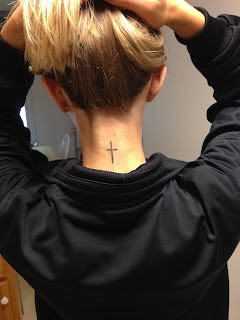Recently at Albright College
in my senior seminar capstone course we had a Passover Seder that Dr. Mehta
led. The Seder was my first and I learned a lot about the traditions of the
Passover Seder. There was a good bit of food present, there would have been
more but I forgot to bring my dish that day, but we only ate a small portion of
the food that was present. There was a turnip that represented how the Lord
passed over the homes of the Jewish ancestors; there was a roasted egg that is
associated with mourning and the destruction of the temple; and also an orange
that represents the notion that there is a place for everyone regardless of
gender or sexual orientation.
The orange use to be a
peculiar part of the Passover Seder plate because where the orange was there
use to be bread. And the bread represented that being of a different sexual orientation
was useless and went against Judaism. To have an orange be transformed into a
religious artifact that is representative of inclusion was an eye opening part
of the Seder. The orange not only represents inclusion but also represents
fruitfulness that all member, including transgender gay men and women, can
provide to Judaism.
The class and I also went
on a field trip to the Ephrata Cloister. At the Ephrata Cloister the class and I
learned that their theology included a God that had two parts. The God of the Ephrata
Cloister had a male half and a female half. There was, interestingly enough,
also a fruit found in the iconography of the Ephrata Cloister. The fruit was a pomegranate
that represented the soft feminine side of God.
The involvement of fruit
both in the Passover Seder and the imagery of the Ephrata Cloister opens the
door to a realm of enclosure. In the Passover Seder there use to not be a place
for the LGBTQ community but now there is a place for everyone. There also is a
shift in the viewing of ostracized as well. The Haggadah talks about the
fruitfulness that is provided by them when they work together in Judaism. The
fact that this falls under the food as religion section of our course expresses
intertwining intricacies of food and religion.
The presence of the
orange reminds me of the open table that came to be the model in the African Methodist
Episcopal Church. During Communion Sunday we recite the Ten Commandments and
take communion in order to wash away our sins. Originally the only way to take communion
was to be a member of the church for ninety days but the AMEC seeing that this
was keeping sinners away from washing their sins away embraced the open table model.
One thing to remember is
that they are human, work, and contribute, to the cause just like the rest of
humanity. The notion does not carry over into the Seder because it is
commemorative but for communion the person cannot receive help if they are not
able to get to the help.












